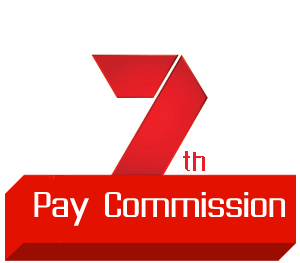Paramilitary Forces awaiting government nod for One Rank One Pension OROP

New Delhi: With the ‘One Rank, One Pension’ (OROP) scheme for military veterans set to be notified soon, officials of central paramilitary forces, too, may be in for good news soon as the government is likely to take a final decision on granting of “organised services” status to them.
New Delhi: With the ‘One Rank, One Pension’ (OROP) scheme for military veterans set to be notified soon, officials of central paramilitary forces, too, may be in for good news soon as the government is likely to take a final decision on granting of “organised services” status to them.
In a significant order by a division bench of Justices Kailash Gambhir and Najmi Waziri on September 3, Delhi High Court had asked the Centre to consider these forces as “organised services” and ensure non-functional financial upgradation (NFU) from 2006 in terms of the 6th Pay Commission.
“Home Ministry, the cadre-controlling authority of these officers, will soon take a final call in this regard as the court had given it eight weeks’ time to issue orders. That deadline will expire in the first week of November,” sources in the security establishment said.
They said the chiefs of these forces have also submitted their respective reports in this regard to the Home Ministry and have indicated that such upgradation should be granted to these personnel.
“Some officials of these forces, retired and serving, have also met Home Minister Rajnath Singh in this regard recently. He has assured them that the government will come out with its final decision soon,” they said.
Sources added that the government may take the final call on the issue post the declaration of Bihar poll results on November 8 as the model code of conduct is in place till then.
Defence Minister Manohar Parrikar had yesterday said that the notification for the implementation of the OROP scheme for military veterans will be made “within days” of the Bihar poll process coming to an end.
“The government also has the option of filing a Special Leave Petition in Supreme Court for challenging the Delhi HC order. But the forces have requested the Ministry not to take this step and instead implement the HC order, as that would be a morale booster,” they said.
PTI

New Delhi: With the ‘One Rank, One Pension’ (OROP) scheme for military veterans set to be notified soon, officials of central paramilitary forces, too, may be in for good news soon as the government is likely to take a final decision on granting of “organised services” status to them.
New Delhi: With the ‘One Rank, One Pension’ (OROP) scheme for military veterans set to be notified soon, officials of central paramilitary forces, too, may be in for good news soon as the government is likely to take a final decision on granting of “organised services” status to them.
In a significant order by a division bench of Justices Kailash Gambhir and Najmi Waziri on September 3, Delhi High Court had asked the Centre to consider these forces as “organised services” and ensure non-functional financial upgradation (NFU) from 2006 in terms of the 6th Pay Commission.
“Home Ministry, the cadre-controlling authority of these officers, will soon take a final call in this regard as the court had given it eight weeks’ time to issue orders. That deadline will expire in the first week of November,” sources in the security establishment said.
They said the chiefs of these forces have also submitted their respective reports in this regard to the Home Ministry and have indicated that such upgradation should be granted to these personnel.
“Some officials of these forces, retired and serving, have also met Home Minister Rajnath Singh in this regard recently. He has assured them that the government will come out with its final decision soon,” they said.
Sources added that the government may take the final call on the issue post the declaration of Bihar poll results on November 8 as the model code of conduct is in place till then.
Defence Minister Manohar Parrikar had yesterday said that the notification for the implementation of the OROP scheme for military veterans will be made “within days” of the Bihar poll process coming to an end.
“The government also has the option of filing a Special Leave Petition in Supreme Court for challenging the Delhi HC order. But the forces have requested the Ministry not to take this step and instead implement the HC order, as that would be a morale booster,” they said.
PTI






 7th
Pay Commission – Curtain Raiser – “The Seventh Pay Commission may
consider pay ratio of the pay of the bottom paid employees to the pay of
the highest paid officials will come down to 1:9 from 1:12″, sources
indicate.
7th
Pay Commission – Curtain Raiser – “The Seventh Pay Commission may
consider pay ratio of the pay of the bottom paid employees to the pay of
the highest paid officials will come down to 1:9 from 1:12″, sources
indicate.









